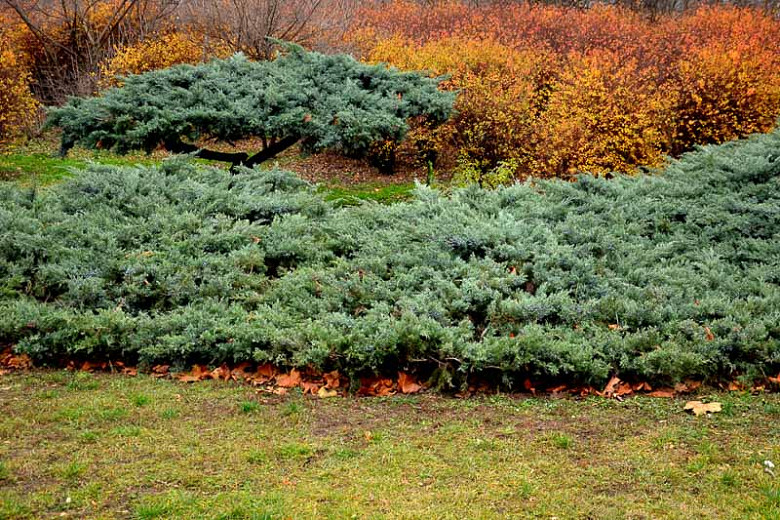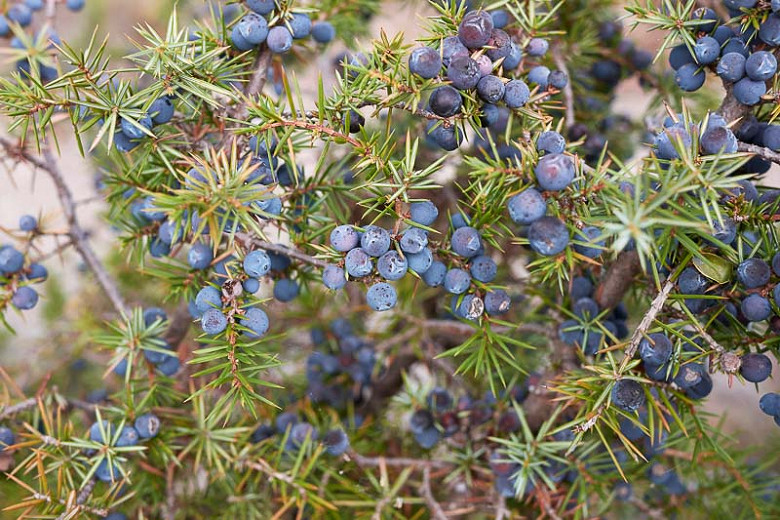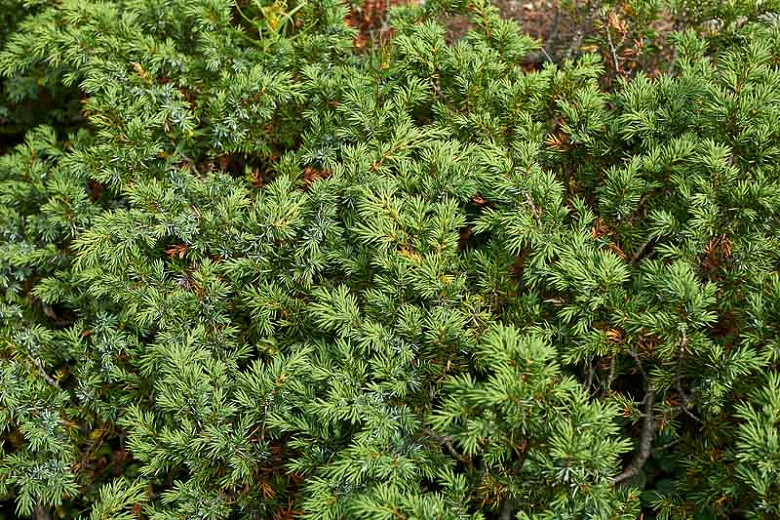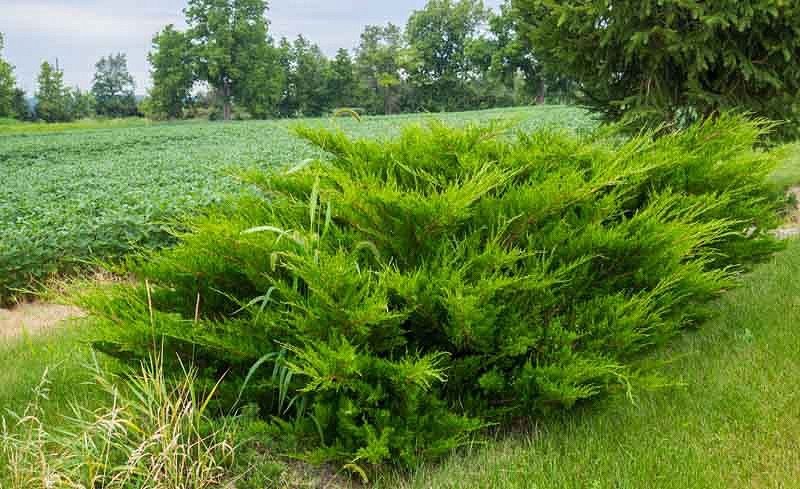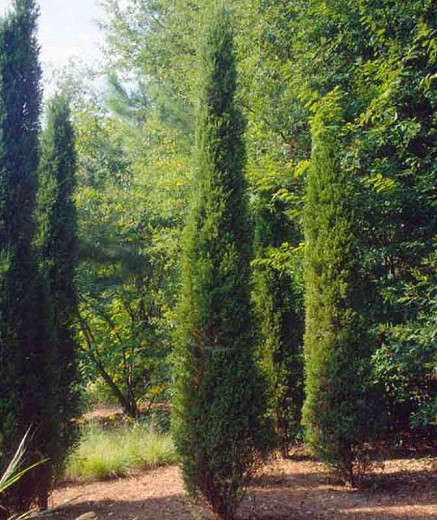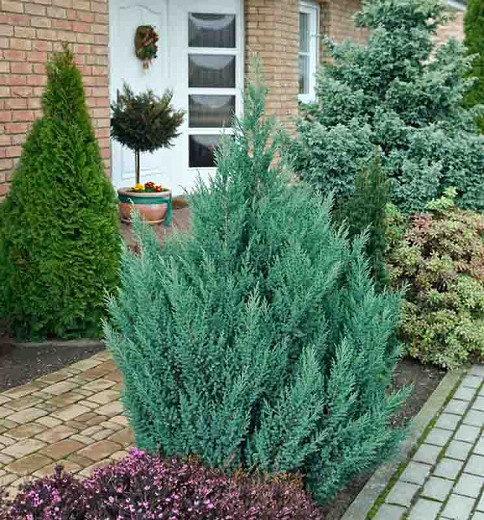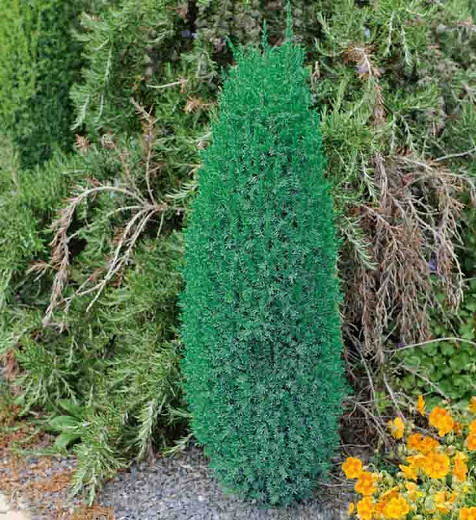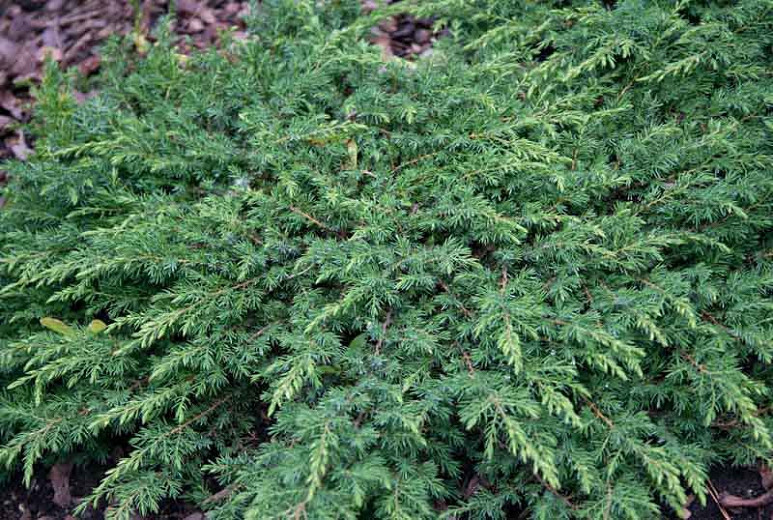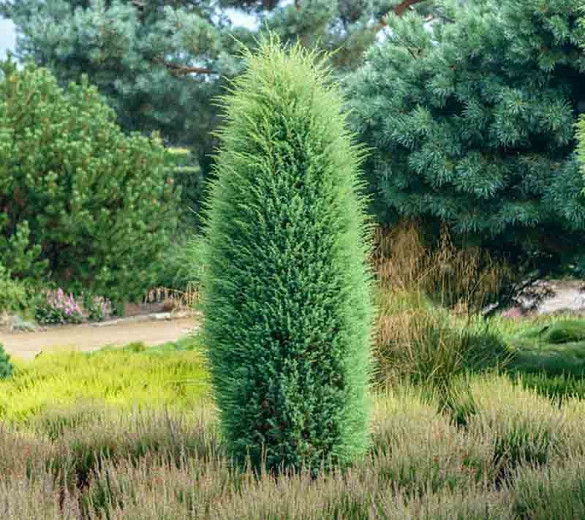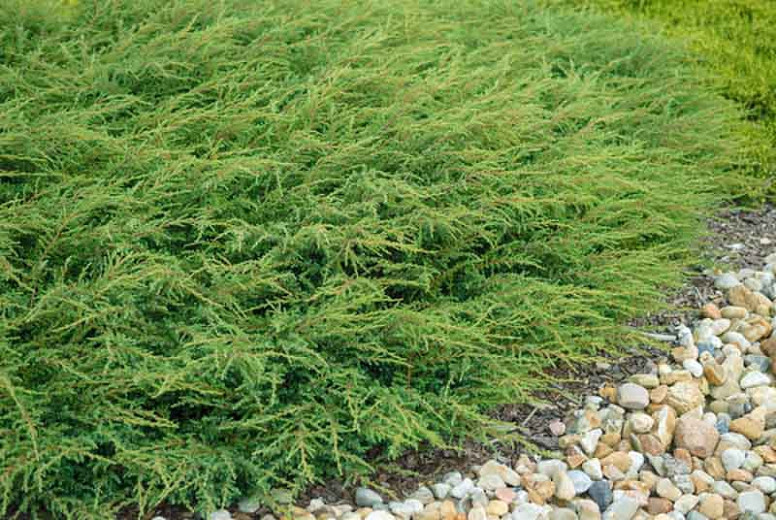Juniperus communis (Common Juniper)
Possibly the most widely distributed tree in the world, Juniperus communis (Common Juniper) is an evergreen shrub or columnar tree. In North America, it most often grows as a low mat-forming shrub reaching up to 5 ft. in height (150 cm) and 7-13 ft. across (210-390 cm). In parts of New England, Common Juniper occasionally grows up to 25 ft. (750 cm) in height, and it is commonly a tree in Europe. The aromatic, prickly, needle-like, gray-green leaves are arranged in whorls of 3. Unlike most junipers, whose leaves turn scale-like at maturity, Common Juniper leaves remain needle-like throughout the shrub's life. Common Juniper is dioecious, with separate male plants and female plants. Small yellow spring flowers give way on female plants to small, berry-like cones, ripening to a waxy dark blue to black color in fall. Juniper berries are food for wildlife, especially many species of birds and mammals. They are used to flavor gin, a liquor developed in the 17th century in the Netherlands. Noted for its superior tolerance for cold temperatures, Common Juniper can live for more than 170 years. Highly valued as an ornamental, it was first cultivated in 1560. Today, it is widely grown and provides good ground cover even on stony or sandy sites.
- Grows up to 5-25 ft. tall (150-750 cm) and 3-12 ft. wide (90-360 cm).
- Performs best in full sun in any well-drained soils. Tolerates a wide range of soils including poor soils. Drought tolerant once established.
- Low maintenance, no pruning required.
- Keep an eye out for juniper blight, cedar apple rust, wilt, mites, borers, scale, midges and bagworms.
- Propagate by seed or semi-hardwood cuttings.
- Foliage may cause skin irritation.
- Native to North America, Europe, northern Asia and Japan.
Requirements
| Hardiness | 2 – 6 |
|---|---|
| Heat Zones | 1 – 6 |
| Climate Zones | 1, 1A, 1B, 2, 2A, 2B, 3, 3A, 3B, 4, 5, 6, 7, 8, 9, 10, 11, 12, 13, 14, 15, 16, 17, 18, 19, 20, 21, 22, 23, 24, A1, A2, A3 |
| Plant Type | Conifers, Shrubs, Trees |
| Plant Family | Juniperus – Junipers |
| Exposure | Full Sun |
| Season of Interest | Spring (Early,Mid,Late)Summer (Early,Mid,Late)FallWinter |
| Height | 5' – 25' (150cm – 7.5m) |
| Spread | 3' – 12' (90cm – 3.6m) |
| Water Needs | Low, Average |
| Maintenance | Low |
| Soil Type | Chalk, Clay, Loam, Sand |
| Soil pH | Acid, Alkaline, Neutral |
| Soil Drainage | Moist but Well-Drained, Well-Drained |
| Characteristics | Showy, Evergreen, Fruit & Berries |
| Native Plants | United Kingdom, United States, Alaska, California, Midwest, Illinois, Indiana, Iowa, Michigan, Minnesota, Nebraska, North Dakota, Ohio, South Dakota, Wisconsin, Northeast, Connecticut, Delaware, Maine, Massachusetts, Maryland, New Hampshire, New Jersey, New York, Pennsylvania, Rhode Island, Vermont, Pacific Northwest, Idaho, Oregon, Washington, Rocky Mountains, Colorado, Montana, Utah, Wyoming, Southeast, Alabama, Georgia, Kentucky, North Carolina, South Carolina, Virginia, West Virginia, Southwest, Nevada, Arizona, New Mexico |
| Tolerance | Deer, Drought, Dry Soil, Rocky Soil |
| Attracts | Birds |
| Garden Styles | Informal and Cottage, Prairie and Meadow |
